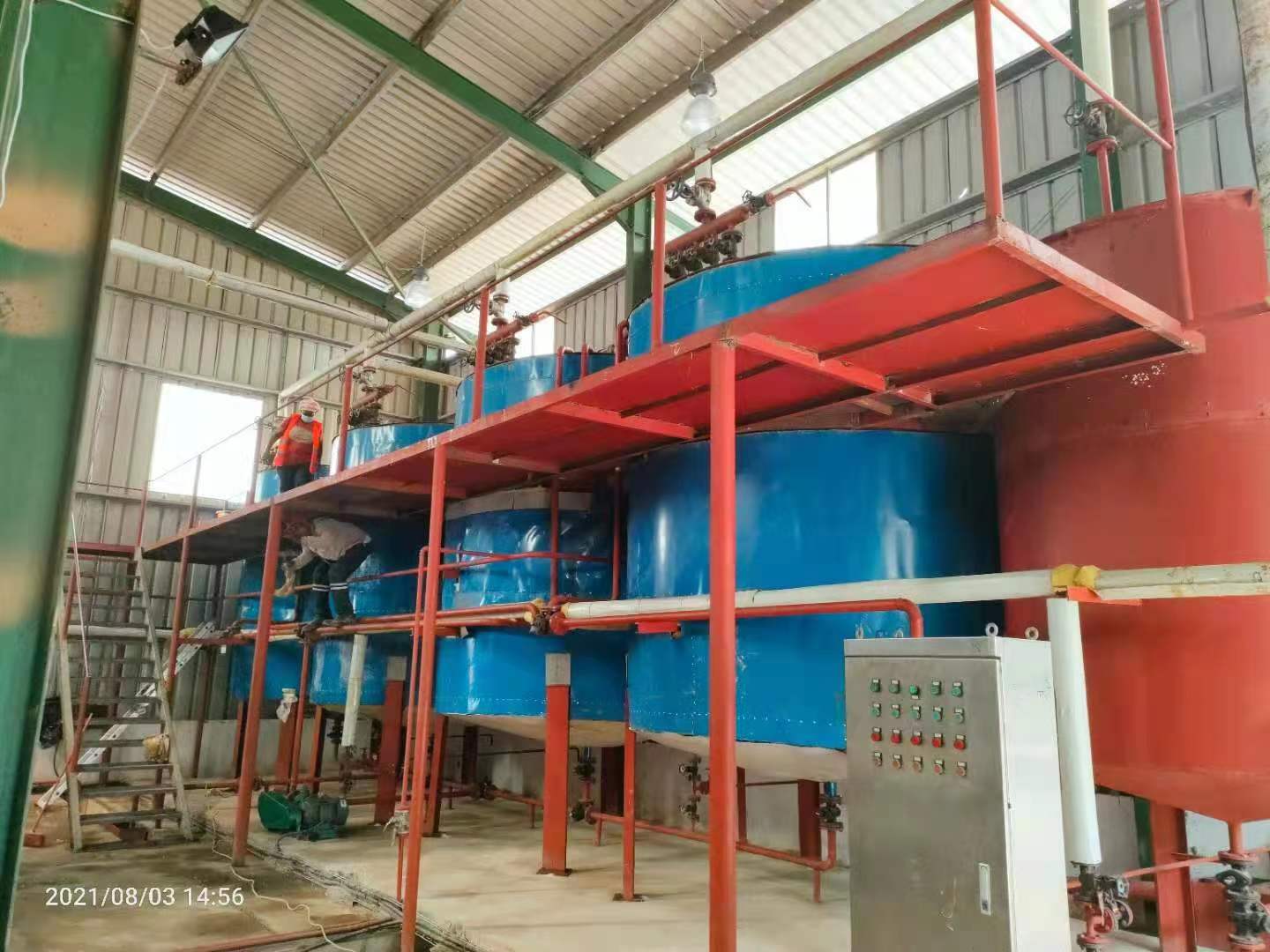China leading palm oil mill plant machine manufacturer and supplier
Email:info01@cnoilmachine.com
The main component of palm oil is triglyceride, which can generate soap (fatty acid salt) and glycerin through saponification reaction (mixed with sodium hydroxide or potassium hydroxide solution). The fatty acids it contains are mainly palmitic acid (about 44%) and oleic acid (about 39%), which can make the soap have good hardness, cleaning power and foam stability.
(taking the production of 1000g soap as an example)
Palm oil 300-500 Provides hardness and cleaning power. Too high a proportion may cause the soap to be dry. It is recommended to match it with other oils.
Coconut oil 200-300 Increases foam richness and cleaning power.
Olive oil / sweet almond oil 100-200 Moisturizes the skin and improves the mildness of the soap (optional, adjusted according to needs).
Sodium hydroxide (NaOH) About 130-150 Participates in the saponification reaction, and the amount needs to be accurately calculated according to the saponification value of the oil (can be queried through the saponification value table).
Purified water About 300-350 Dissolve sodium hydroxide to form lye.
Additives (optional) Appropriate amount Flavors, pigments, essential oils, natural powders (such as oatmeal powder), etc., to improve smell and efficacy.
Safety protection: Wear rubber gloves and goggles to avoid contact of sodium hydroxide with skin and eyes; the operating environment is well ventilated.
Tool disinfection: stainless steel pots, stirring rods, molds (silicone or wood), electronic scales, thermometers, etc. are wiped and disinfected with alcohol.
Calculate the amount of sodium hydroxide according to the saponification value of the selected oil (for example: the saponification value of palm oil is about 0.141, and 1000g of palm oil requires about 141g of NaOH). The amount of water is usually 2.5-3 times the weight of NaOH.
Accurately weigh the oil, sodium hydroxide and water and place them separately.
Pour sodium hydroxide slowly into water, stirring while pouring (reverse operation is strictly prohibited to prevent splashing) until it is completely dissolved. The temperature of the lye will rise, wait until it cools to 40-50℃ for use.
Put solid fats such as palm oil and coconut oil into a stainless steel pot, heat on low heat until melted (liquid fats can be used directly), and cool to 40-50℃ (close to the temperature of the lye to avoid excessive temperature difference affecting saponification).
Pour the lye slowly into the fat, and stir continuously with a stirring rod or electric stirrer until "Trace" appears (the liquid becomes thicker and the stirring trace is not easy to disappear), usually It takes 20-60 minutes (cold soap takes longer, and a small amount of alcohol can be added to accelerate saponification).
If you add fragrances, essential oils or natural ingredients, add them during the Trace stage and stir evenly.
Pour the soap liquid into the mold, cover the surface with plastic wrap, and place it in a cool and dry place to solidify. Avoid moving for the first 24-48 hours, then demold, cut into blocks, and continue to place for 4-6 weeks (maturation period) to allow the saponification reaction to be more complete, reduce alkalinity, and improve mildness.
Hardness control: The higher the proportion of palm oil, the higher the hardness of the soap, but more than 50% may cause the soap to be too dry. It is recommended to use 20%-30% coconut oil and 10%-20% moisturizing oil (such as olive oil).
Mildness optimization: 5%-10% of oil (not involved in saponification) can be reserved, called "super fat", which can increase the moisturizing degree of soap. Olive oil, shea butter, etc. are commonly used.
Sodium hydroxide is highly corrosive. Be sure to wear protective equipment when operating. If it accidentally contacts the skin, rinse immediately with plenty of water.
The finished soap needs to be fully mature (pH value drops to 7-9) before use to avoid alkaline irritation to the skin.
Observe the saponification state: If the liquid is too thin or oil and water are separated after stirring, it may be due to insufficient alkali or improper temperature, and the formula needs to be recalculated or the temperature needs to be adjusted; if there is a rancid smell (rancid smell), it may be that the oil has deteriorated and needs to be discarded.
Low cost: The price of palm oil is relatively stable and suitable for mass production.
Stable performance: The soap made is hard, easy to shape, has a long shelf life, and has strong cleaning power.
Widely used: It can be used to make laundry soap, bath soap, industrial soap, etc.
General mildness: Soap made from palm oil alone has strong cleaning power, but may cause dry skin and needs to be matched with moisturizing oils.
Environmental controversy: Large-scale planting of palm oil may involve the problem of deforestation of tropical rainforests. It is recommended to choose palm oil with sustainable certification (such as RSPO) to reduce environmental impact.
Scaled equipment: Use reactors, automatic mixing systems, molding machines, etc. to improve production efficiency.
Quality standards: comply with national cosmetic or detergent standards, and conduct microbial and pH tests.
Environmental protection: production wastewater must be treated before discharge to avoid alkaline pollution.
Through reasonable formulation and standardized operation, palm oil can be made into cost-effective soap. Whether it is home-made or commercially produced, it is necessary to focus on safety, quality and sustainability.
Henan Huatai supply palm oil production line, palm oil soap making machinery, palm oil refining, palm oil fractionation, any need please email to info01@cnoilmachine.com

If you are interested in our palm oil machine and palm oil mill plant. You can contact us through online consultation, filling out the form below, email, phone, etc. Our engineers will customize the most suitable plan and best price for you.